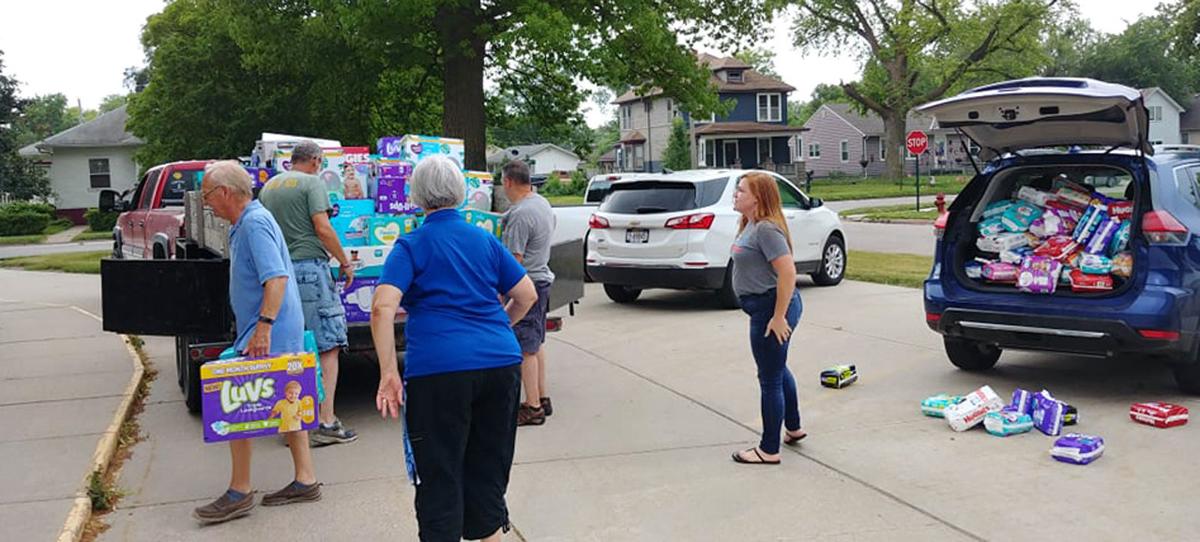If your child is not potty trained, how many diapers do you have on hand right now? That’s a question I certainly wouldn’t have been able to answer with any specificity when my children were babies. But it’s a question that parents who struggle to afford the expense — about $70-$80 per month, per baby — can answer easily, because managing diaper need is among their most significant anxieties.
That’s what a new study from Jennifer Randles, an associate professor of sociology at California State University, Fresno, has found. She talked to women who didn’t just track the number of diapers they had at any time; they tracked their baby’s urine output down to the ounce. As Maria, a mom of four, told Randles: “Diapers is the No. 1 concern for me right now because I don’t want to struggle more, so I have to think about this stuff in this way, and I can’t go over my daily limit. It’s hard living paycheck to paycheck, living diaper to diaper.”
Over half of the 70 women Randles interviewed said they were more stressed about affording diapers than they were about affording food, housing or electricity. (She attempted to recruit fathers for this study as well, but even after explicitly looking for dads who manage their children’s diaper needs, she could find only three willing participants.)
Sign up for The Morning newsletter from the New York Times
Diaper need is an under-researched topic, Randles said, but studies have suggested that somewhere between 29% and 36% of families struggle to afford diapers. The need is so significant, and it causes outsized stress, because diapers are not subsidized by the major anti-poverty programs: WIC (the Women, Infants, and Children program) covers formula and other foods for pregnant women, mothers of young children and children younger than 5; and SNAP (the Supplemental Nutrition Assistance Program, or food stamps) covers other nutrition.
Cora, a mom of five, told Randles: “I worry about diapers more than food because we can portion our food. We get some food stamps, always have at least a can of something. You can’t really portion your diapers in the same way and say, ‘OK, I’m going to use only three diapers today.’ What if your kid goes poop four times?”
Though no governmental organization keeps statistics on how much diaper need has increased since the pandemic started, a representative from the National Diaper Bank Network said that there was an 86% increase on average in the number of diapers distributed to children and families during the pandemic as compared to pre-pandemic figures, and they projected that nearly 40% more children are being served by their diaper banks.
Holly McDaniel, executive director of the Austin Diaper Bank in Texas, said that while local need has declined since I last interviewed her in the summer of 2020, “we still are at a 75% increase over where we were in February 2020.” McDaniel said that her organization had distributed 1.7 million diapers in 2020, compared with 950,000 diapers in 2019.
The need was especially pronounced in February 2021, when winter storms knocked out electricity and access to clean drinking water across Texas. In one week during that period, the Austin Diaper Bank distributed about 200,000 diapers, 4,000 ready-made containers of formula and 2,000 cans of powder formula, McDaniel said.
Parents who have not experienced diaper need may have trouble understanding how much time, energy and effort goes into the process of accessing diapers, Randles said. Some blithely suggest that families should just use cloth diapers, which is “completely oblivious to the actual lived circumstances” of these mothers, some of whom are working multiple jobs, may not have in-home washers and dryers, and might even live in shelters, because they do not have housing.
Diaper need is also associated with a stigma that may be even deeper than needing food assistance.
“It’s still taboo to talk about so many different bodily functions,” said Randles, and that inability to meet their children’s most intimate needs felt shameful to some women.
“People just judge you more,” Yesenia, a mom of two, told Randles. “If we needed help with housing or food, people get that, but what does it say about you as a mother if you can’t provide diapers, the one simple thing only your child needs?”
Perhaps as a result of this stigma, diaper need is linked to greater rates of depressive symptoms in new moms than food insufficiency is. It is also linked to more frequent visits to the pediatrician for diaper rash and urinary tract infections.
McDaniel is hopeful that the Biden administration’s $1.9 trillion stimulus package, which includes monthly checks of up to $300 paid directly to families for children younger than 5, will help ameliorate at least some diaper need for her clients. The stimulus package is projected to cut child poverty compared with pre-pandemic levels by 52% for Black families, 45% for Latino families and 39% for white families.
There is also some bipartisan legislation in the works to provide support to families in need of diapers during the pandemic. But the moms who need those diapers cannot wait; the anxiety of providing for their children’s most basic bodily functions is on their mind right now.
—
To find out more about donating diapers, visit nationaldiaperbanknetwork.org/home-covid19/.
This article originally appeared in The New York Times.
© 2021 The New York Times Company
The Link LonkMarch 29, 2021 at 07:11PM
https://ift.tt/3m1CH8y
'Living Paycheck to Paycheck, Living Diaper to Diaper' - Yahoo News
https://ift.tt/2Comt7j
Diapers

No comments:
Post a Comment